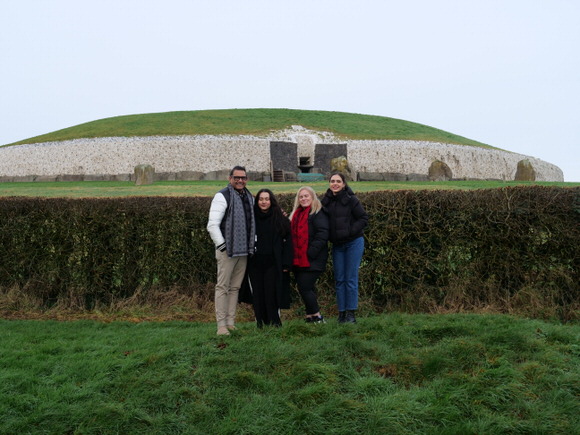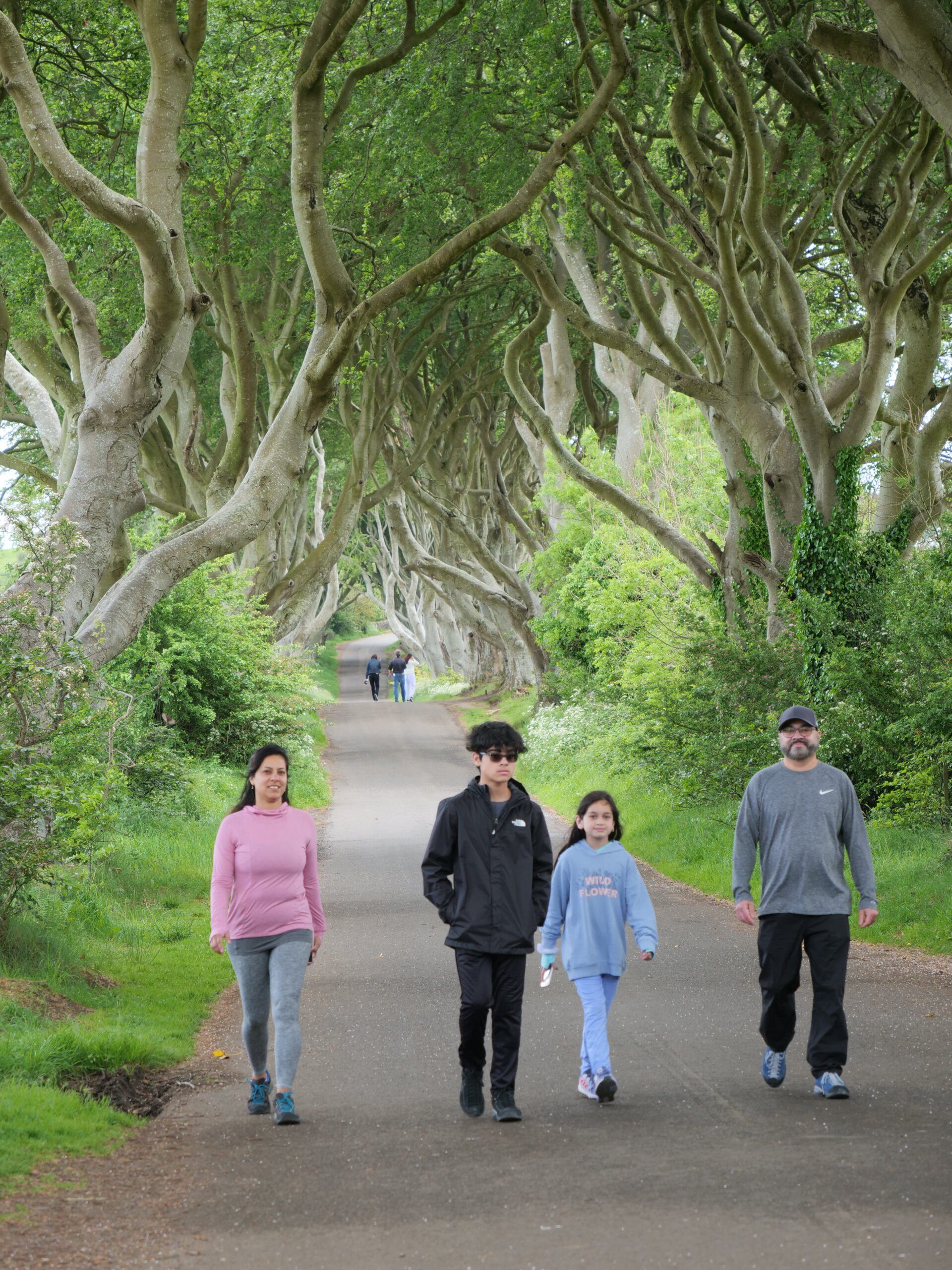A full day of heritage, history, mythology and folklore visiting the Royal County’s foremost and iconic historic locations
A full day of

Going anti clockwise, first stop will be Monasterboice graveyard which hosts Muiredach’s High Cross. This 5th century monument stands a lofty 5.5 metres but is still dwarfed by the 100ft round tower with its door 6 foot above ground. A particular unusual feature in that Irish round towers have their foundation above the ground.
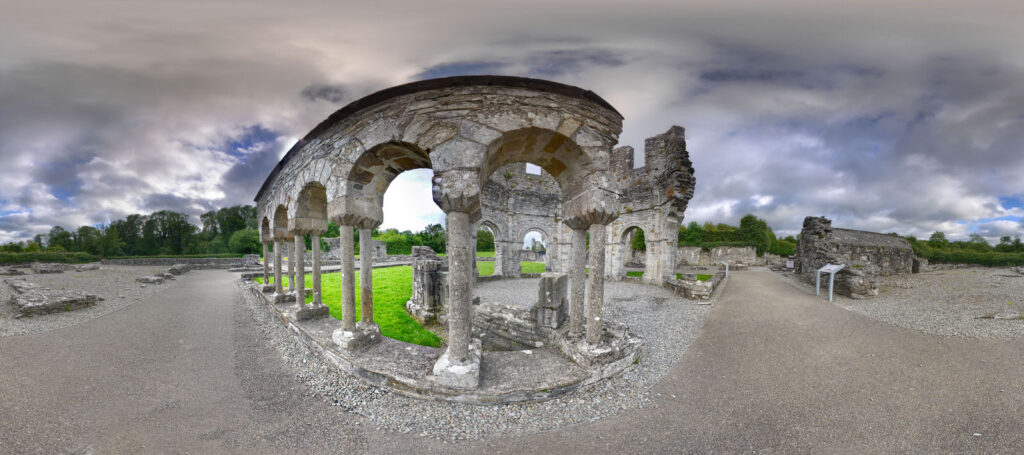
From Monasterboice, we will visit the nearby Mellifont Abbey founded in 1142 by the Cistercian Order. This order has its roots in Cîteaux (Cistercium), a place in Burgundy, France. it is quite an extensive and large monastic site and was important enough at the time to host the signing of the Treaty of Mellifont in 1603 by the Gaelic chief Hugh O’Neill to signify the end of the Nine Years War whence the signatories pledged to live under English Law.
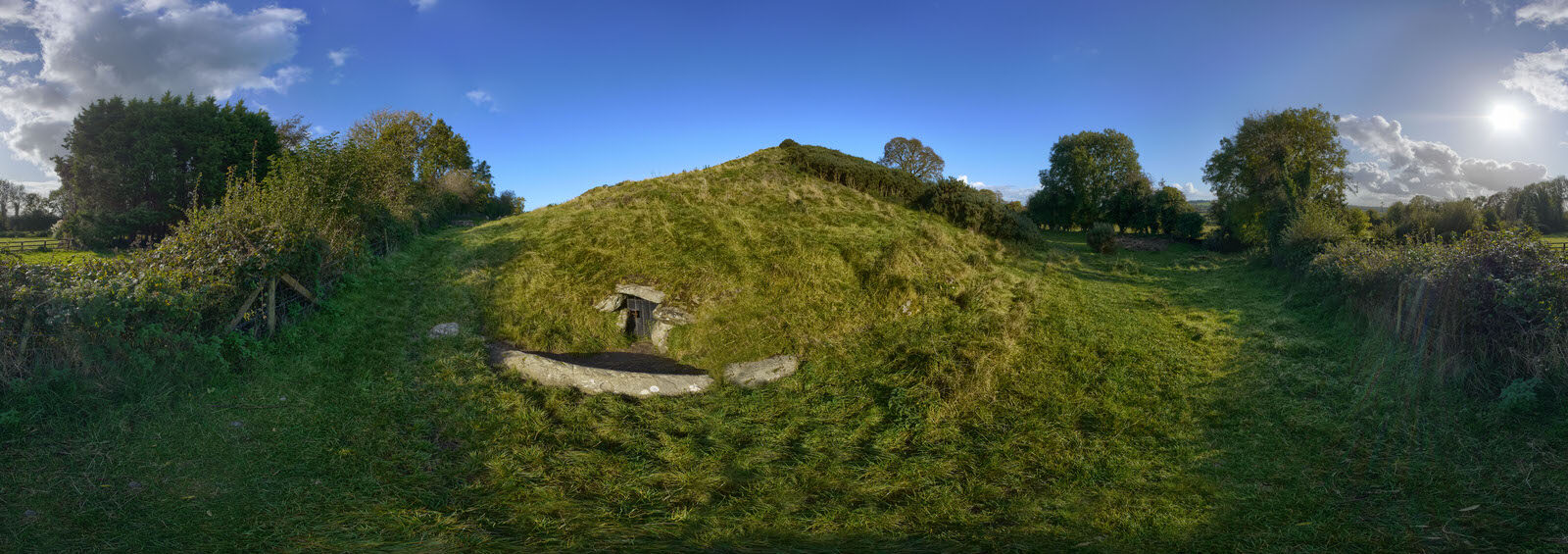
Next Stop is Dowth, one of the trinity of Passage tombs at what’s known as the bend in the river. Dowth is unique in that it is the most accessible passage tomb just in from the side of the road but in no way is it less important than it’s more famous and popular sisters Newgrange and Knowth. If the weather on the 21st December prevents the morning rays of sunshine lighting up chamber at Newgrange, there is always a possibility to witness another event, just as amazing, the sunset bathing the back wall of the tomb at Dowth South around the shortest day of the year. We will also do a drive by of Newgrange and Knowth but will not be staying except for photo opportunities.
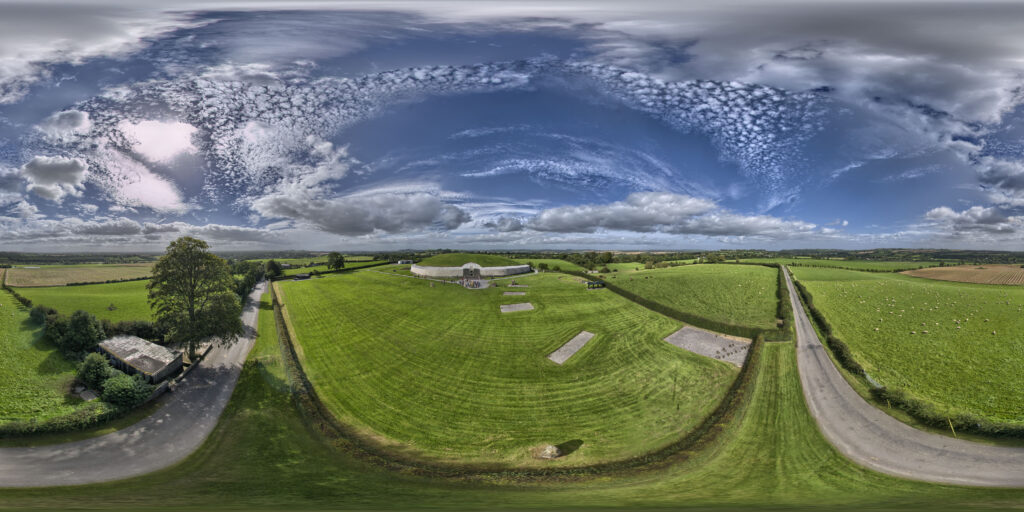
Access to both Newgrange and Knowth is fully operated and controlled by the OPW and require separate tickets and is also part of a separate half day tour with us. But we will drive past Newgrange for photo opportunities.
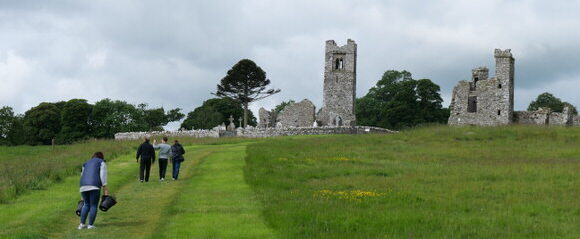
The Hill of Slane is a famous place where it is said St Patrick lit what was known as the Pascal Fire or Flame. This was in contravention of a ban on bonfires around the time of an annual pagan festival which happened to coincide with Easter. The High King who resided at Tara 10 miles away as the crow flies and had banned all bonfires. St Patrick lit the fire to celebrate Easter. King Laoire is said to have despatched his warriors to capture and bring St Patrick to him. It is said the King was so impressed by St Patrick, that it ensured the beginning of Christianity in Ireland.
Boyne Valley Itinerary
Taking in all of the iconic sites of the royal County Meath; Monasterboice, Mellifont Abbey, Dowth, Hill of Slane, Bective Abbey, Trim Castle and Hill of Tara.
Access to Newgrange and Knowth is controlled by the State Office of Public Works (OPW). This is a separate Day Tour.

